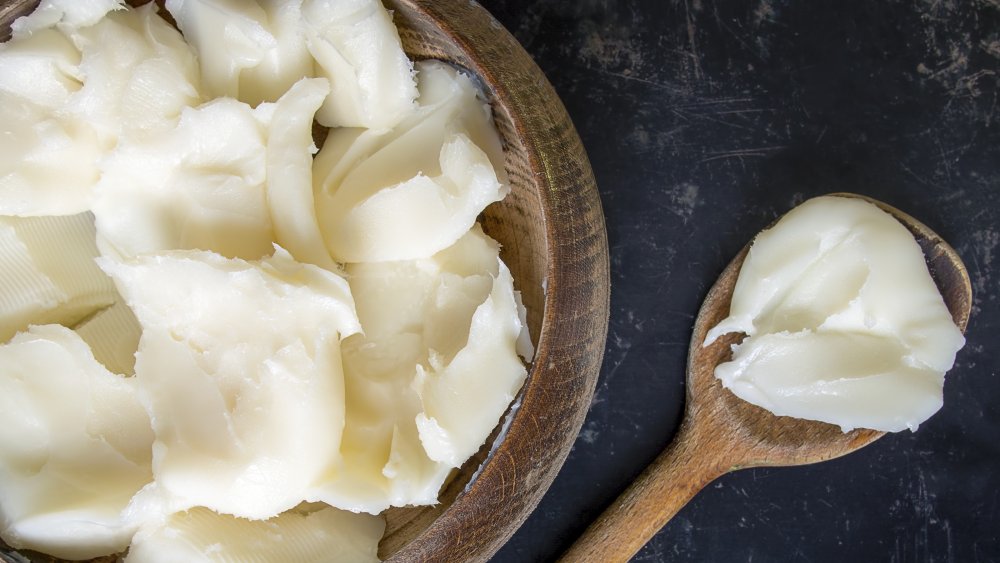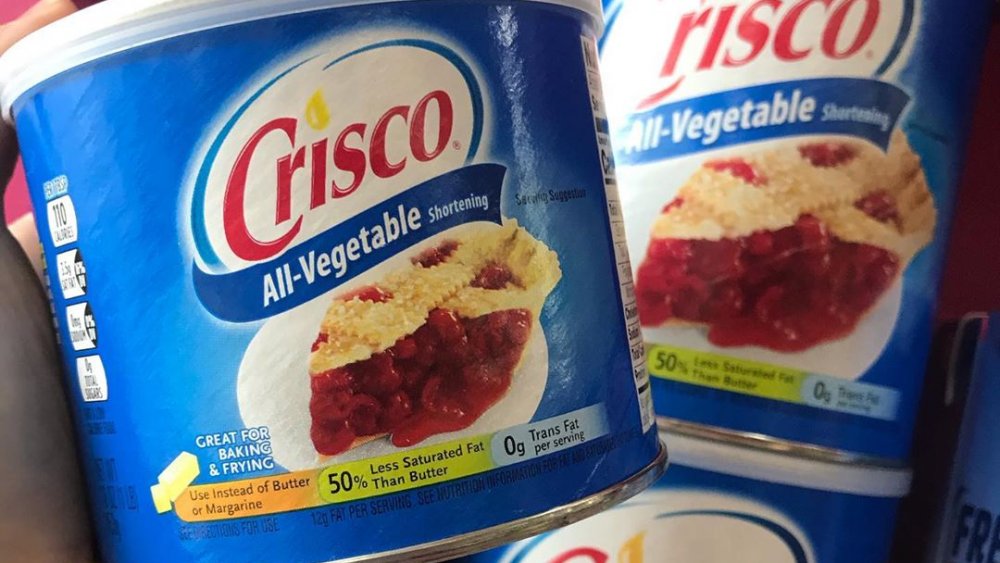The Real Difference Between Lard And Crisco
Crisco, lard — it's all the same, right? Not exactly. While both are a type of fat (via Healthline), and you can use either one to make an ultra-flaky pie crust, Crisco and lard aren't actually one in the same. The main difference between the two is what they're made of. Lard is traditionally made from pig fat, and can be rendered from any fatty part of the animal, including pork belly and butt. According to MyRecipes, you can even make your own lard at home! It's as simple as straining and saving the rendered fat left behind when you fry a few strips of bacon in a skillet or slow-cook a pork shoulder.
Crisco, on the other hand, isn't made from animal products at all. As its classic blue container proclaims, Crisco is made from all-vegetable shortening — though that doesn't mean it's made with any vegetables. According to NPR, Crisco is made from partially hydrogenated vegetable oil. The process for making Crisco is a little more complicated than saving your leftover bacon fat, but basically it's made with soybeans. The "hydrogenated" part of its name means it has gone through a process that turns liquid fats into solids, with the end result looking a lot like lard.
How to choose between Crisco and lard
Despite their differences, Crisco and lard are mostly interchangeable when it comes to cooking and baking, though if you want to bake with lard, we don't recommend using the fat leftover from cooking bacon or pork shoulder. According to Epicurious, if you want to use lard for baking the ultimate pie crusts, you'll need to look for rendered leaf lard, which won't have the same strong pork flavor. However, lard and Crisco are both great for roasting crispy veggies (via Taste of Home).
One other consideration when choosing between the two fats is health. According to NPR, when it was first introduced in 1911, Crisco was touted as being more digestible, which led to lard somewhat falling out of favor. However, this changed in the 1990s, when scientific studies found that vegetable oils, including Crisco, contain trans fats that contribute to unhealthy cholesterol levels and clogged arteries. According to MyRecipes, homemade lard that hasn't been hydrogenated to turn it into a solid doesn't contain any trans fats, but the flipside is lard has higher levels of saturated fat compared to vegetable oils (via NPR). Overall, as one really isn't much better for you than the other, it's fine to use both in moderation — there's no need to bring back old-fashioned buckets of lard or start slathering everything in Crisco.

